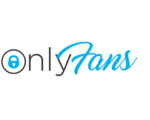This week, astronomy enthusiasts across the UK are in for a treat as one of the most abundant meteor showers of the year reaches its climax. The Geminid meteor shower is poised to dazzle observers with its potential for spectacular sightings, particularly on Wednesday night. However, experts anticipate the shower’s peak to occur on Thursday evening, offering a prime opportunity for sky gazers to witness this celestial spectacle.
Up to 150 meteors with multi-coloured streaks of light could be visible per hour from much of the UK.
The shower will peak at about 7.30pm and, with the moon entering a new phase, the dark skies will help stargazers catch the sight.
Forecasters said there is a “good chance” of clear skies on Thursday evening – but warned of cloud and showers in some areas.
Dr Minjae Kim, research fellow in the physics department at the University Of Warwick, said the Geminids have evolved “into one of the major astronomical events”.
“An interesting feature of the Geminids is that their radiant point, where the meteors seem to originate from, rises in the mid-evening,” he said.
“This means you can start watching this shower earlier in the night than most other meteor showers.
“These meteors are known for their brightness, speed and typically yellow hue.
“The Geminids are observable worldwide due to their nearly 24-hour peak duration, making them accessible during both night and predawn hours.”
How should people observe the skies?
Experts said people should be prepared for the cold weather.
They added viewers should lie flat on their backs with their feet facing south, allowing for the best view of the sky.
Dr Kim said: “The spectacle continues until dawn, offering ample opportunities for observation – aided by the long nights of December.
“In the UK, I would recommend you head out around 6-7pm, giving your eyes enough time to adjust to the night sky, enhancing the visibility of the meteors.
“The best viewing spot would be somewhere far away from urban lights – so rural areas will get the best viewing experience.”

Will there be clear skies?
Forecasters said rain could spoil the view for Thursday’s predicted peak, but there should still be some opportunity for stargazers to enjoy the spectacle in the sky.
Sky News weather producer Joanna Robinson said: “There will be a good chance of seeing the Geminid meteor shower, but some fog patches will develop in the chilly south, which will hinder viewing.
“Showers will also affect the milder and windier north, limiting the view at times, too.”
What is the Geminid meteor shower?


















